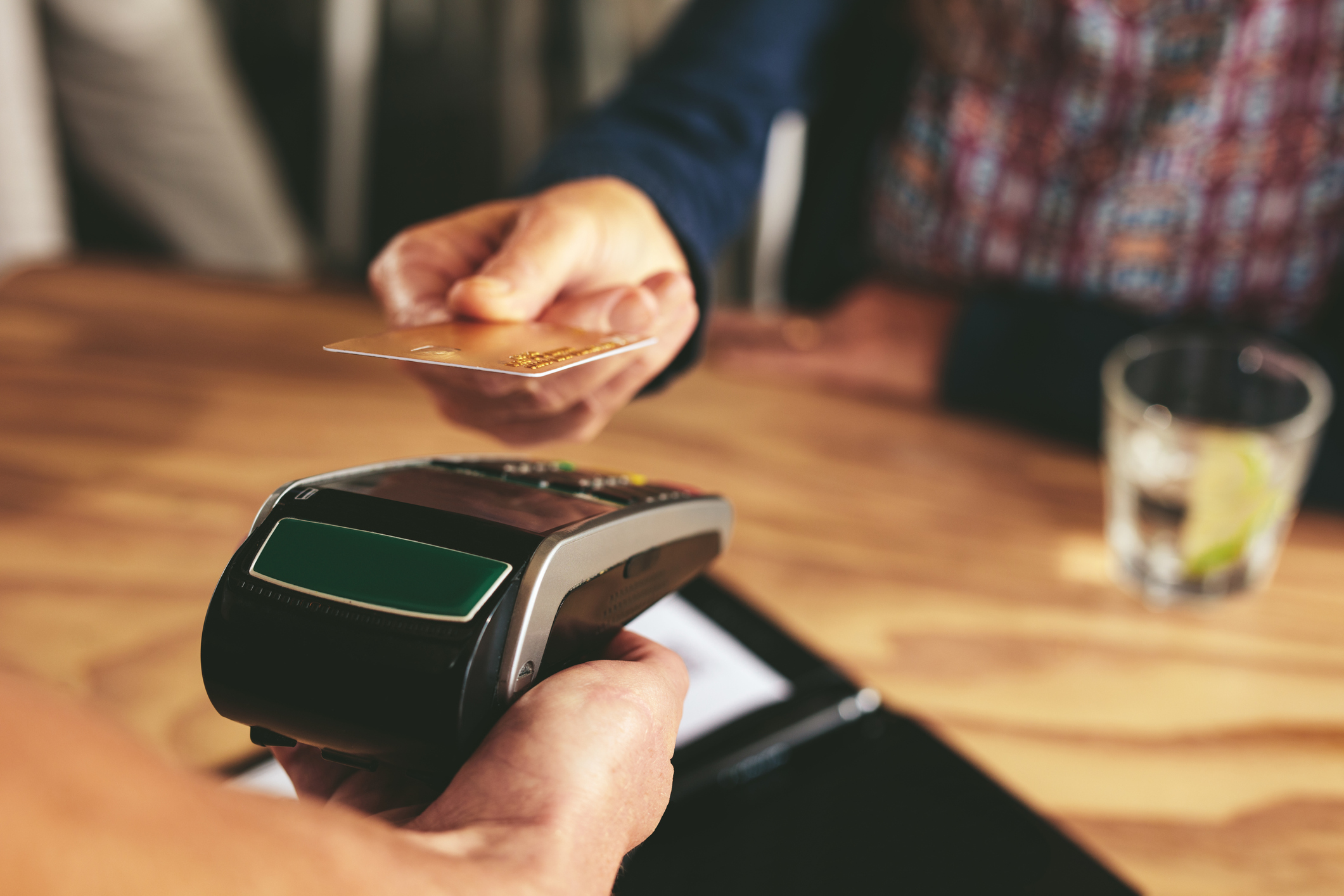Advantages & Disadvantages to Contactless Payments in Restaurants

Contactless payments launched in 2007, but its only now that the pandemic is driving a shift toward a cashless society. With electronic payments businesses and consumers can reduce multiple touch points in restaurants, adhering to COVID-19 safety measures.
As consumers continue to maintain social distancing from cash, they are becoming more comfortable with using cashless payment methods for purchases, and there are no shortages of payment options. They can make payments using everything from contactless credit cards, debit cards, bank cards, tap cards, and contactless card solutions like TouchPay Direct, cashless ATMs, mobile payment apps, QR codes, and even wearables like the Apple watch.
It seems that while a cashless world has been on the horizon for a number of years, the coronavirus pandemic has finally given the public a firm reason to give up cash. We are currently seeing a widespread change in consumer behavior propelling the desire for a cashless society forward – including for those who were previously skeptical of going cashless.
However, before your restaurant makes the shift to card or mobile payments only you need to weigh out the pros and cons as you might lose customers who prefer, or need, to pay with cash.
Advantages of contactless payments
For many consumers, using contactless payments can provide much needed reassurance while shopping in stores during the pandemic. While these new purchase options may seem unusual for some, Covid-19 has caused businesses and consumers to seek touch-free payment alternatives. It has quickly become second nature for consumers to tap their card to pay for goods and services instead of using cash or punching in a PIN.
No Hidden Fees for Merchants
Contactless payment systems don’t have additional fees, so businesses that decide to accept them are only required to pay the usual credit card fees.
Consumer Demand
The demand for paying with smartphone wallets is on the rise, especially since the pandemic. It’s even predicted to grow tremendously more since consumers are ready for the benefits of better security and the ease of tap-and-pay as well as continuing to social distance.
Better Loyalty Programs
Loyalty programs are a great way to increase your repeat business and sales, and there are a few different styles restaurants can choose from. Away with the simple punch card that gets stamped with every purchase is a popular choice. On the rise is accruing points through a customer profile or loyalty app.
Now you can have a loyalty program that works with a smartphone’s wallet to automatically keep track of rewards. These programs use the same tech as contact payments, and even let customers pay directly through their wallet for total convenience. So, if customers forget their cards or member numbers, it’s no problem.
That ease will bring more repeat business to your restaurant—it’s a win-win.
Contactless Payments are Faster & Safer
Contactless methods are fast and give customers a better purchasing experience. PIN numbers or signatures aren’t required, and change doesn’t need to be counted the way it does for cash transactions. What’s more, receipts can be emailed instead of printed out. So, way less handling of cards and machines from both parties involved in the transaction.
Disadvantages of contactless payments
While the positives of contactless payments outweigh the negatives there are, there are two you can look at.
Security and Fraud Concerns for Customers
The USA has only just started shifting to chip card technology and now we’re asking them to move to contactless payments. As of 2018, the United States is trailing global leaders when to comes to mobile payments (France has the highest proportion of transactions using non-cash methods, followed by Sweden and Canada). As the owner or manager of a restaurant, you would have to consider how to educate your customers on the security benefits of tap-and-go payments.
The Age of the User
For obvious reasons, millennials have accepted more to contactless payments, while older generations remain more skeptical. My grandmother was still busy writing checks not too long ago. Change is hard for older generations. It’s estimated that just 25% of adults older than 35 have started using contactless payments. However, since the pandemic there has been a huge shift to even the elderly using contactless payments.
As we look to a post-pandemic future, the change in customer behavior during the pandemic is likely to stay within the foodservice space. Since the success of a cashless system depends heavily on each individual restaurant’s business model and concept, only time will tell if the future will be completely cashless.
Like our stories or want to hear more?
Drop us a line @ brittany@pointos.com.
See you next week!
Your devoted hostess,
Brittany


